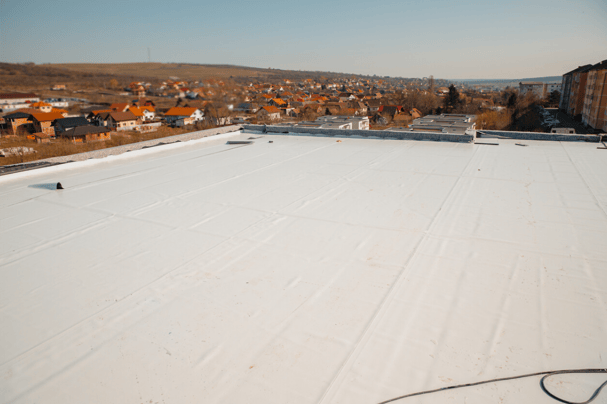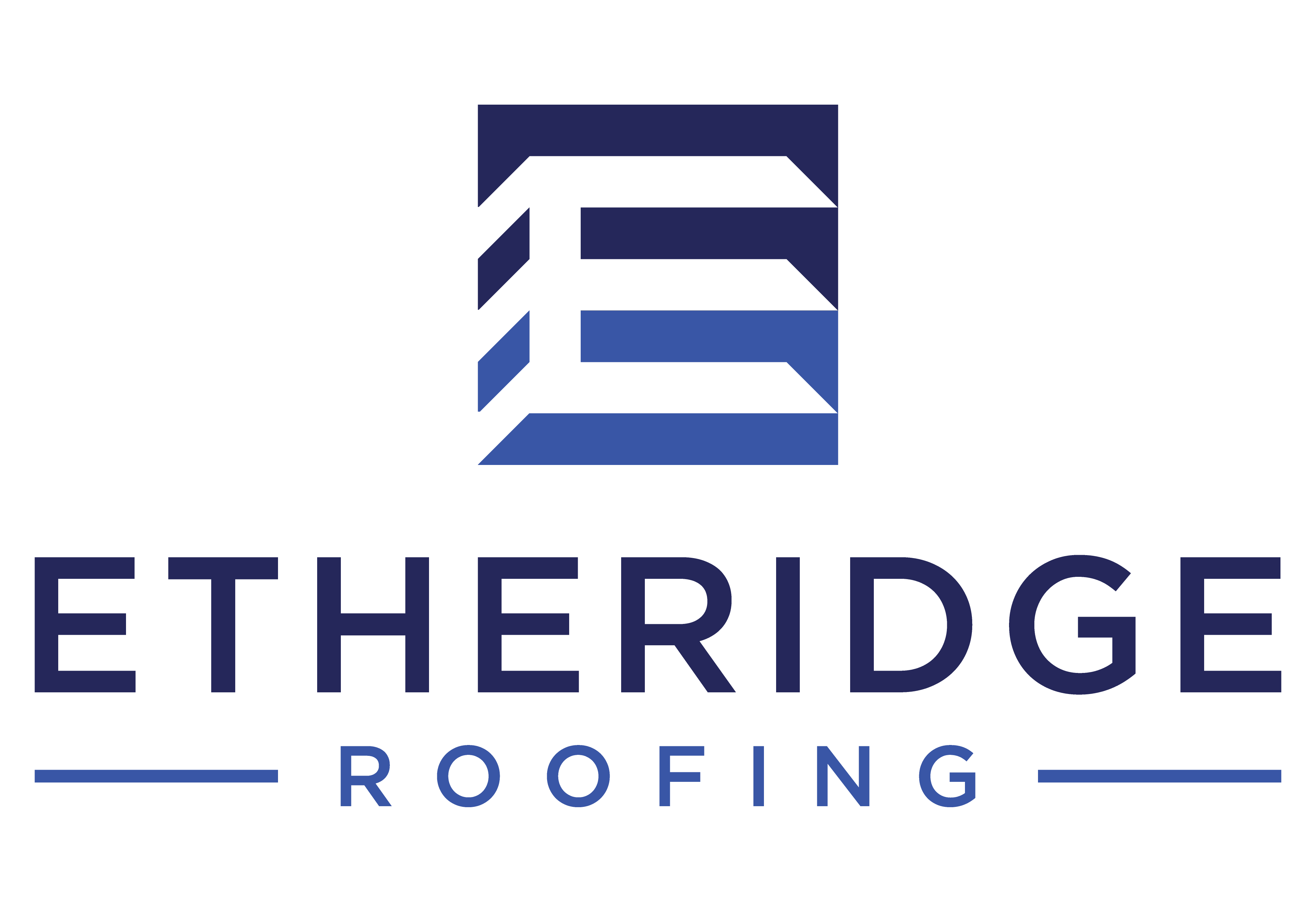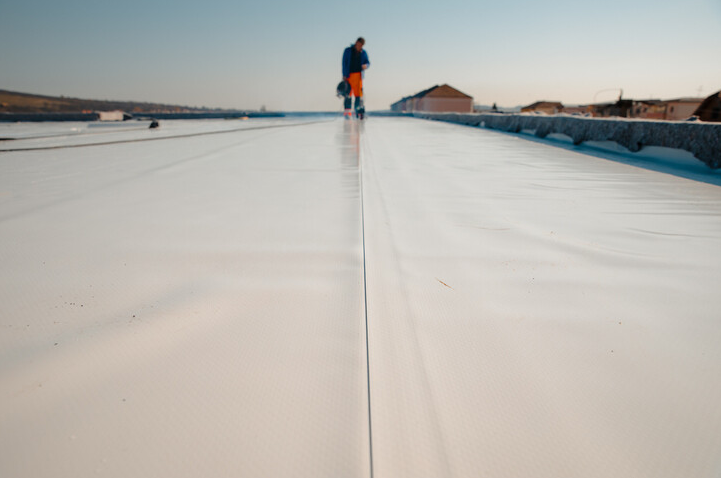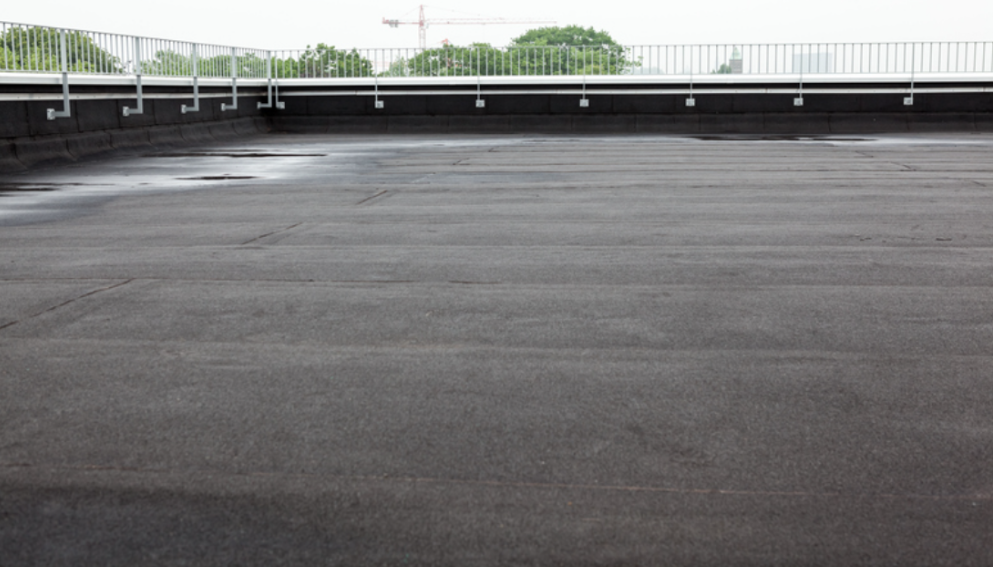Understanding TPO Roofing Systems: Benefits and Considerations
TPO (thermoplastic olefin) roofing systems have become increasingly popular in recent years. This type of roofing offers many advantages, but it’s important to understand the benefits and considerations of this system before making a decision. In this blog post, we will look at the pros and cons of TPO roofing systems, as well as some tips for successful installation and maintenance. By understanding the benefits and considerations of TPO roofing systems, you can make an informed decision about the best option for your flat roofing needs.
What is a TPO roofing system?
TPO stands for Thermoplastic Olefin, which is a single-ply roofing membrane made of synthetic materials, unlike traditional roofing materials such as asphalt and felt.
Longevity and Durability of TPO roofing systems

When it comes to investing in a commercial flat roof, longevity, and durability are key factors to consider. Fortunately, TPO roofing systems excel in both areas, making them an excellent choice for commercial property owners and managers.
TPO roofs are known for their exceptional durability, able to withstand even the harshest weather conditions. From intense UV rays to chemicals and ozone, TPO roofs hold up against it all, ensuring long-lasting protection for your commercial building. This durability not only gives you peace of mind but also helps minimize the need for frequent repairs and replacements, saving you money in the long run.
In addition to their durability, TPO roofs have an impressive lifespan. On average, a well-maintained TPO roof can last up to 25 years, making it a cost-effective investment for your commercial property. This longevity is due to the high-quality materials used in TPO roofing systems, which are designed to withstand the test of time.
Proper installation of TPO roofing systems requires skilled contractors with experience in working with this type of material, as improper installation can result in leaks or other issues down the line.
Regular inspections and timely repairs will help identify and address any issues before they escalate, ensuring the longevity of your TPO roofing system.
Energy Efficiency of TPO roofing systems

Energy efficiency is a crucial consideration. Luckily, TPO roofing systems are an excellent choice for commercial property owners and managers looking to maximize their energy savings.
One of the key factors contributing to the energy efficiency of TPO roofs is their reflective white membrane. This color reflects sunlight, reducing the amount of heat absorbed by the building. As a result, the interior of the commercial space stays cooler, reducing the need for excessive air conditioning. This can lead to significant cost savings on cooling expenses and increased energy efficiency over time.
Additionally, TPO roofing systems have excellent insulation properties, which further contribute to their energy efficiency. The insulation helps to prevent heat transfer from outside to inside, and vice versa. This ensures a more comfortable interior environment while reducing the energy required to maintain it.
By choosing a TPO roofing system for your commercial building, you are not only investing in a durable and reliable roof but also in long-term energy savings. The energy efficiency of TPO roofs can help you reduce your carbon footprint and contribute to a more sustainable future.
When considering TPO roofing for your commercial property, be sure to work with a professional roofing contractor who can help you choose the right thickness and insulation options to maximize the energy efficiency of your TPO roof.
Considerations for choosing TPO roofing systems

When it comes to choosing a TPO roofing system for your commercial building, there are several important considerations to keep in mind. These factors can help you make an informed decision and ensure that you are selecting the best option for your specific needs.
First and foremost, it's essential to consider the location and climate of your commercial building. TPO roofing systems are known for their ability to withstand extreme weather conditions, but certain climates may require additional considerations. For example, if you are in an area prone to high winds or heavy snowfall, you may want to opt for a specific installation method, such as fully adhered or mechanically attached, to ensure maximum durability and resistance.
Another important consideration is maintenance requirements. While TPO roofing systems are relatively low maintenance, regular inspections and maintenance are still necessary to ensure their longevity and performance. It's crucial to work with a professional roofing contractor who can provide you with guidance on the appropriate maintenance schedule and help address any issues promptly.
Cost is also an important factor to consider when choosing a TPO roofing system. While TPO roofs are generally cost-effective compared to other flat roofing options, the specific costs can vary depending on factors such as the size of your building, installation method, and any additional features you may require.
Lastly, it's important to work with a reputable and experienced roofing contractor for the installation of your TPO roof. Proper installation is crucial to ensure the performance and longevity of your roofing system. A professional contractor can guide you through the decision-making process, provide expert installation, and offer ongoing maintenance services to keep your TPO roof in optimal condition.
By considering these important factors when choosing a TPO roofing system, you can make a well-informed decision and ensure that you are selecting the best option for your commercial building. With the durability, energy efficiency, and cost-effectiveness of TPO roofing systems, you can enjoy a long-lasting and reliable solution for your flat roof needs.
Comparison of TPO roofing systems to other flat roofing options
When considering flat roofing options for your commercial building, it's important to compare TPO roofing systems to other alternatives to make an informed decision. TPO roofs have numerous advantages that set them apart from other options.
Compared to traditional asphalt roofs, TPO roofing systems offer superior durability and longevity. While asphalt roofs typically last around 15-20 years, TPO roofs can last up to 25 years with proper installation and maintenance. This means fewer repairs and replacements, saving you money in the long run.
Another popular flat roofing option is EPDM (ethylene propylene diene terpolymer). While EPDM roofs are known for their durability, TPO roofs offer even greater resistance to UV rays, chemicals, and ozone. TPO roofs also have better energy efficiency due to their reflective white membrane, which can lead to significant savings in cooling costs.
When compared to PVC (polyvinyl chloride) roofs, TPO roofing systems are often a more cost-effective option. While PVC roofs have similar durability and energy efficiency, they tend to be more expensive. TPO roofs provide a balance of quality and affordability.
Ultimately, the best flat roofing option for your commercial building will depend on factors such as your location, climate, and budget. Consulting with a professional roofing contractor will help you weigh the pros and cons of each option and determine the best choice for your specific needs.
By comparing TPO roofing systems to other flat roofing options, you can ensure that you choose the option that provides the greatest durability, energy efficiency, and cost-effectiveness for your commercial building.
Importance of proper installation and maintenance of TPO roofing systems
Proper installation and maintenance are crucial for ensuring the longevity and performance of TPO roofing systems. While TPO roofs are known for their durability and resistance to extreme weather conditions, it is important to follow the recommended installation and maintenance guidelines to maximize their effectiveness.
When it comes to installation, working with a professional roofing contractor is essential. They have the expertise and experience to properly install TPO roofs, ensuring that all seams are properly sealed and the membrane is correctly attached to the building. This will prevent leaks and other issues that can compromise the integrity of the roof.
Regular maintenance is also key to prolonging the lifespan of your TPO roof. It is recommended to schedule regular inspections to identify any signs of damage or wear. Prompt repairs can prevent small issues from becoming major problems, saving you money in the long run. Additionally, regular cleaning and debris removal will help prevent the accumulation of dirt and debris that can impact the roof's performance.
By investing in proper installation and maintenance of your TPO roofing system, you can ensure that it continues to provide reliable protection for your commercial building for years to come. A well-maintained roof not only saves you money on repairs but also contributes to the overall value and sustainability of your property.
Remember, it is always best to consult with a professional roofing contractor for guidance on the specific installation and maintenance requirements of your TPO roof. They can provide you with personalized recommendations and ensure that your roof is properly cared for.
Posts by Tag
Recent Posts
Popular Posts
Selecting the appropriate roofing system is...
If you're looking for a green roofing solution...
Your roof is one of the most important parts of...
Recent Posts
With so many options available in the world of...
Understanding the signs of wear, evaluating the...







